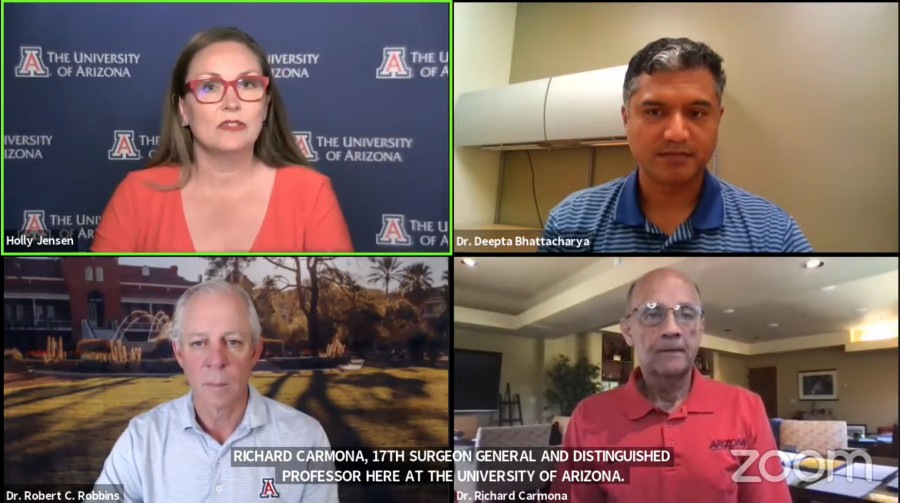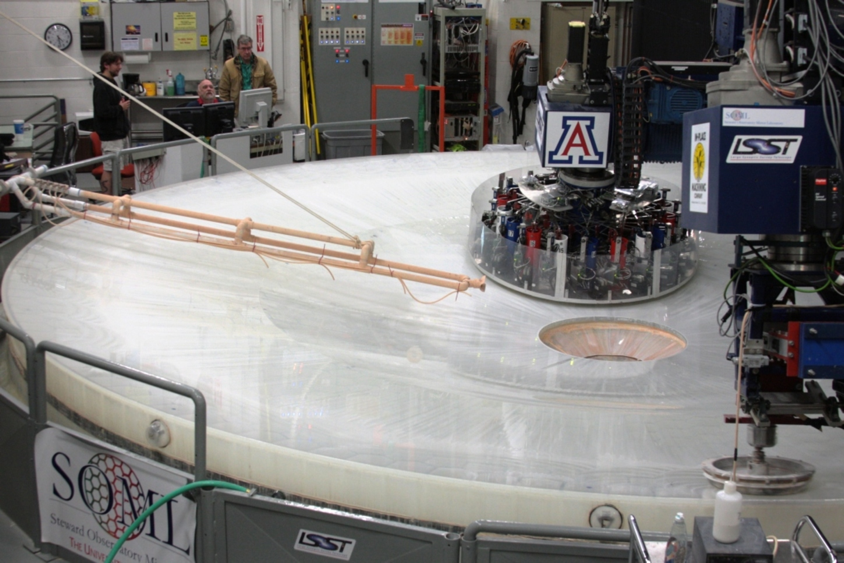The University of Arizona’s COVID-19 virtual university status update team met Monday to discuss vaccination numbers and COVID-19 data.
The UA will continue in Phase 3 of reentry this week. Classes of 100 or fewer students designated as “in-person” or “flex in-person” may begin meeting for in-person instruction.
RELATED: Arizona is opening back up. Here’s how UA students are reacting
The UA has now administered a grand total of 155,391 doses of the COVID-19 vaccine. Of those vaccinated at the UA Point of Distribution, 24.6% self-identify as Hispanic or Latinx.
“This is good progress, but we need to move even more quickly,” said UA President Dr. Robert C. Robbins. “As we’ve discussed many times in prior weeks, this is literally a race against new infections, particularly those from variants which may pose additional challenges or health risks.”
The university is asking all students leaving Southern Arizona for the summer to receive their first dose of a COVID-19 vaccine by Friday, April 16. This will ensure students receive their second dose before the start of summer break.
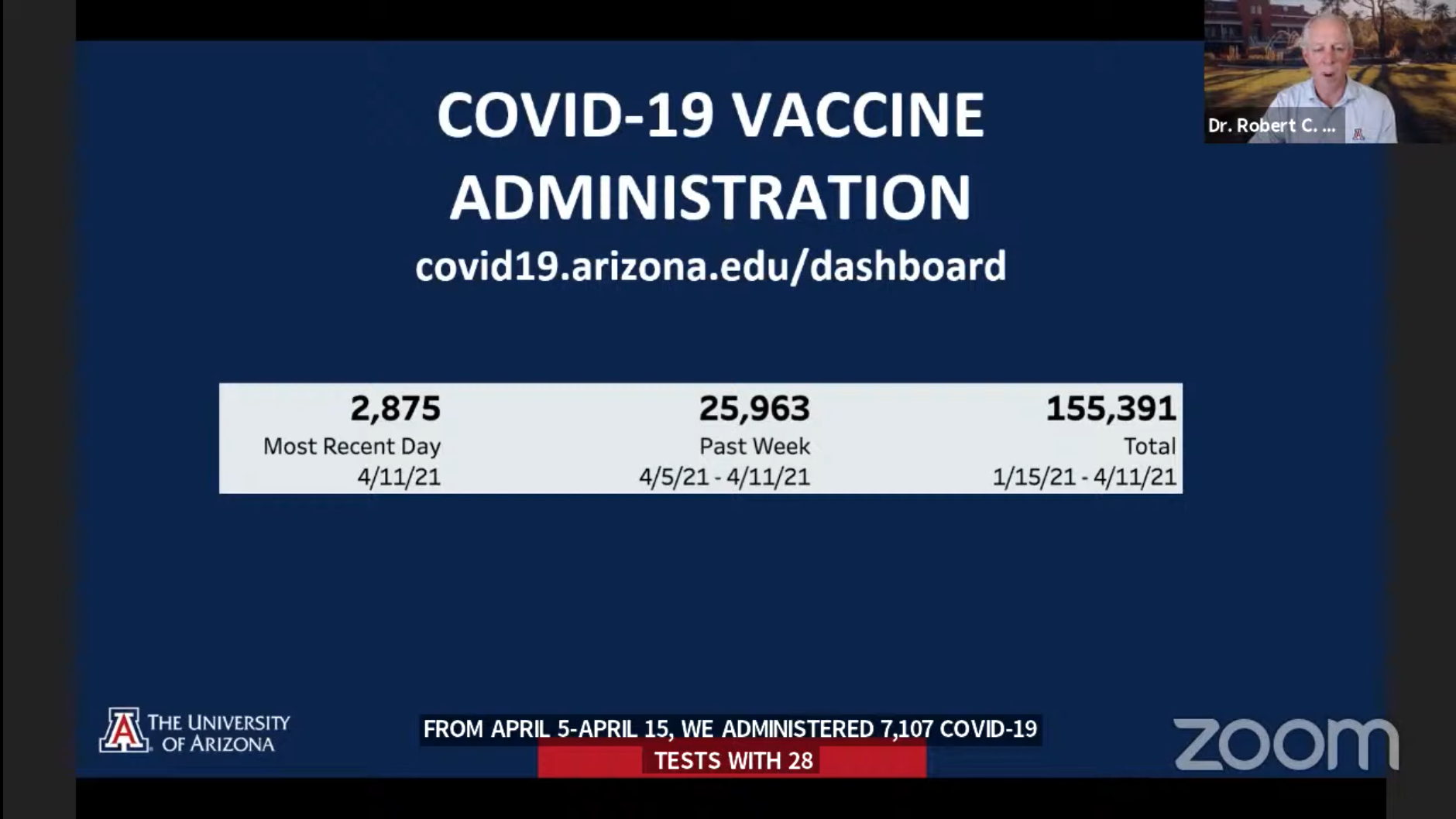
From April 1 to April 10, the UA administered 9,952 COVID-19 tests, which resulted in 39 positives–a positivity rate of 0.4%.
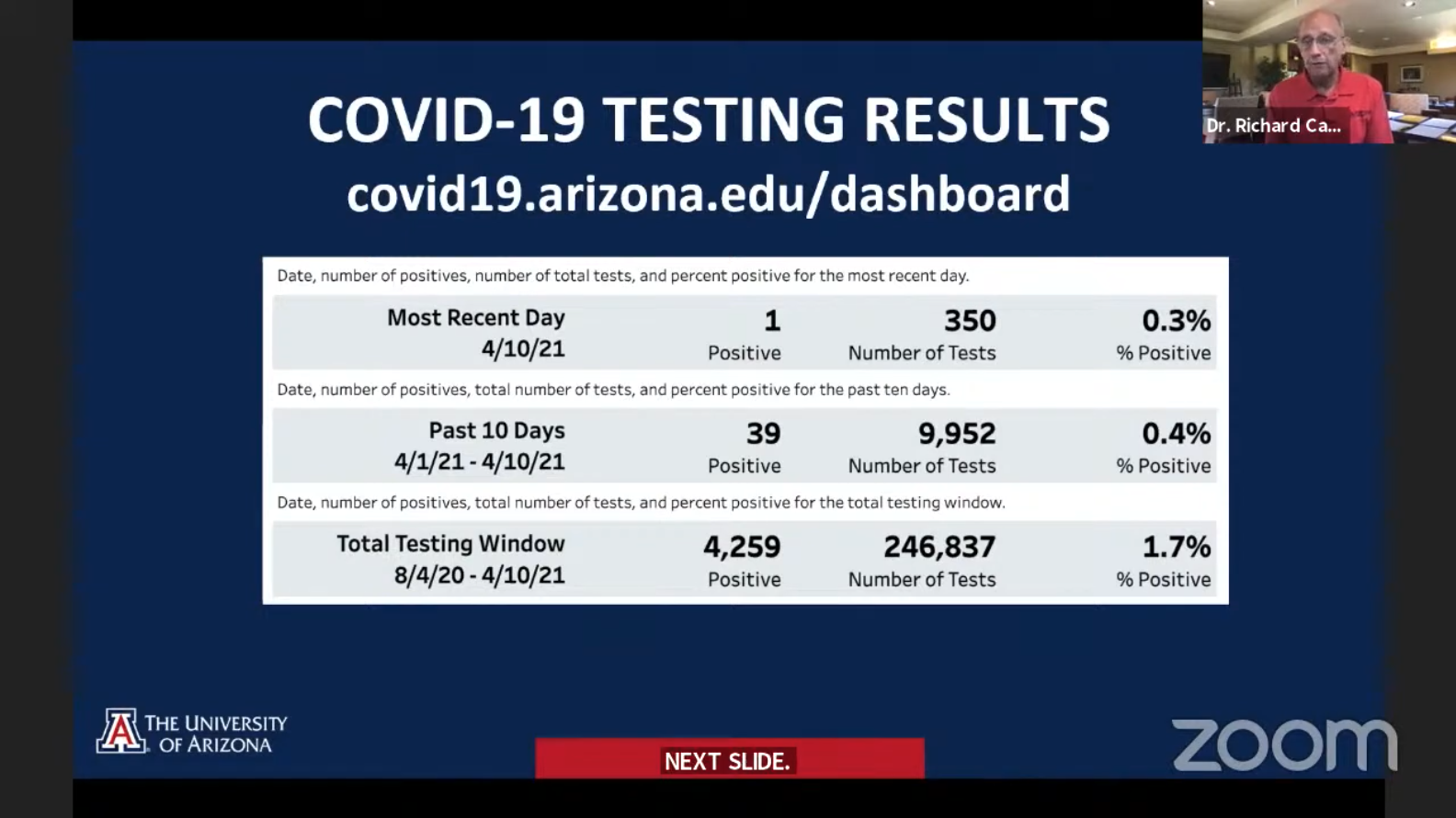
Rates of transmission dipped slightly from their two-month highs. The university zip code area, 85719, Rt decreased to 1.02 from 1.11 the previous week, and the Rt on the county level decreased to 1.00 from 1.07 the previous week.
“Like many other states, we’re starting to creep up a bit,” said task force director Dr. Richard Carmona. “This morning, there are 20 states or more that are actually trending upward a lot more significantly than we are.”
Carmona cited a couple of possible explanations for this increase.
“There’s [COVID-19] exhaustion – people are just tired and don’t want to do it – and, of course, there’s the political discourse, which keeps people confused and then they don’t wear masks, don’t socially distance, and so on,” Carmona said.
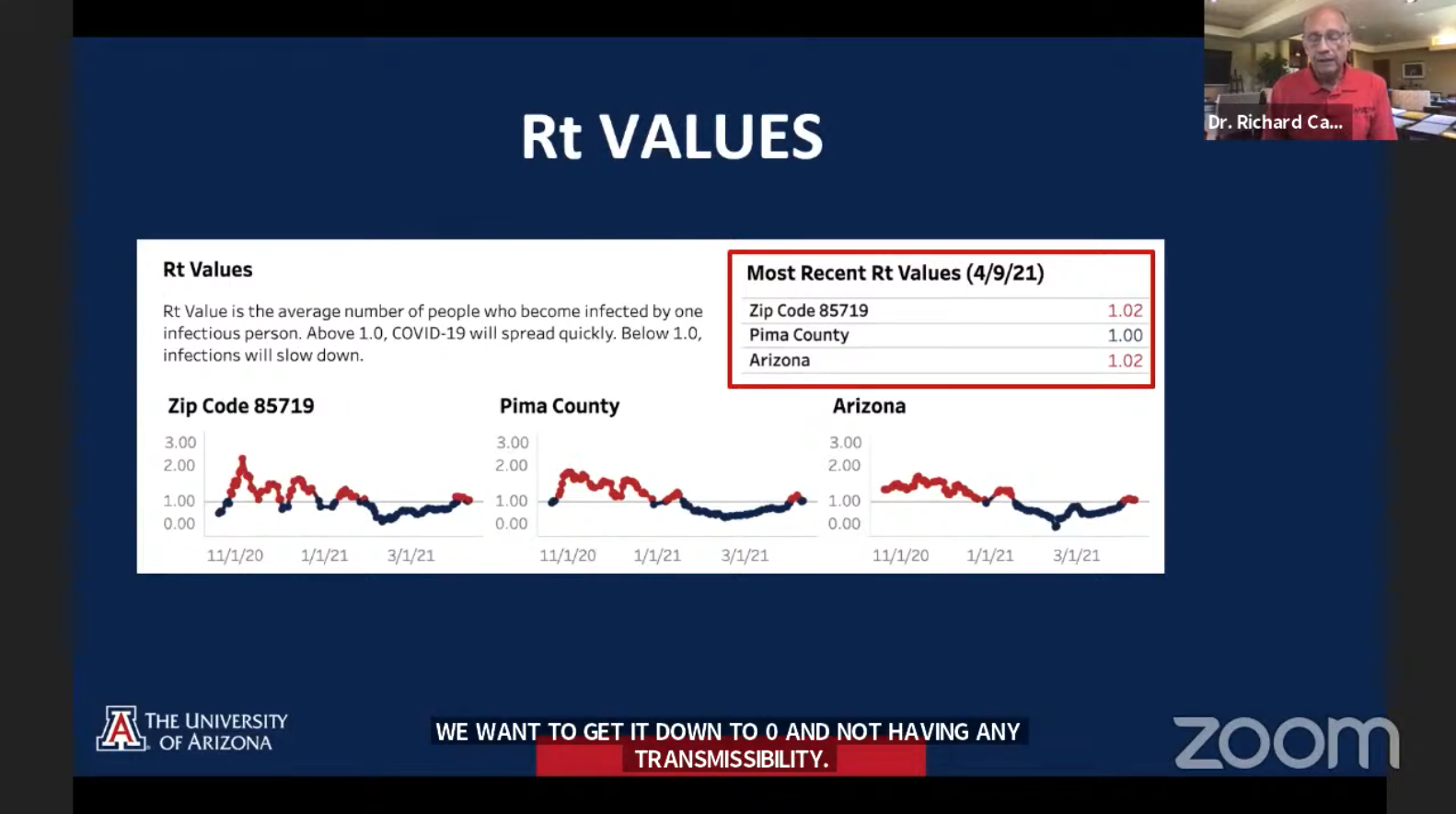
The Campus Area Response Team was deployed to 11 incidents of large gatherings last week, a significant increase from two incidents the previous week. One of these incidents was a gathering of 100 or more individuals.
“To me, this is a manifestation of people who are just tired,” Carmona said. “Again, the danger here is that, especially with the fact that many of our students are otherwise healthy, they can be transmitting the virus and not even know it, so we have superspreader events that are still possible.”
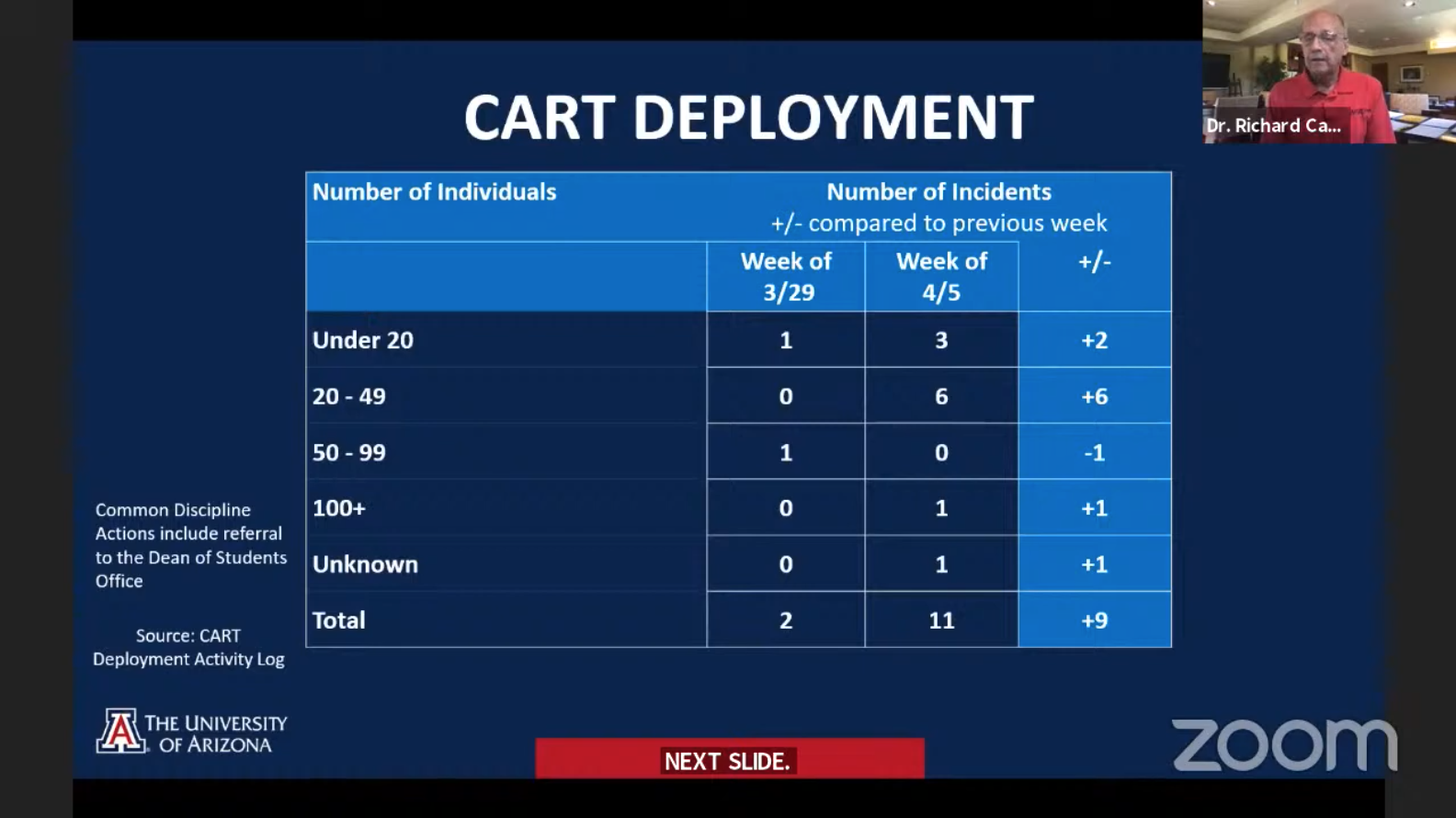
The status update team will meet again next Monday, April 19.
Follow Kristijan Barnjak on Twitter



